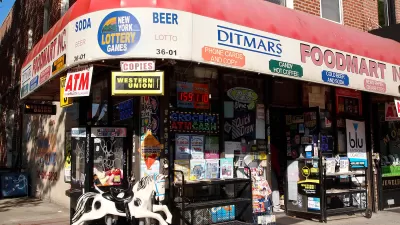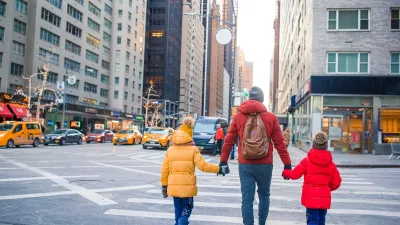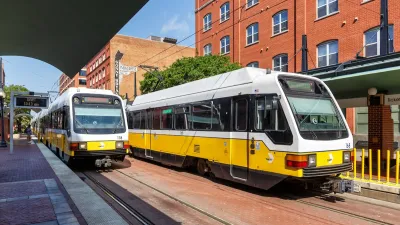Walkable Communities founder Dan Burden believes walkable communities contribute to greater happiness -- and that Silicon Valley has a thing or two to learn from Denmark.
"One measure of quality of life is the level of access we have to the things we value most - jobs, safe streets, affordable transportation and housing, and quality health care, schools and civic spaces such as parks and other gathering places. The ability to walk to many of these places from our homes or places ofemployment generally raises that quality-of-life index. When researchers look for places where people are happiest, it's often in communities where they can live near where they work, walk their children to school and shop at stores within walking or biking distance.
It's probably no coincidence that more than 20 years ago, Denmark set a vision to become one of the best places to walk anywhere. It took a long time to get there, but the Danes apparently are very happy with their results.
Silicon Valley can follow this example. It can leverage its standard of living to increase its walkability and improve its quality of life.
In Silicon Valley communities, most people don't live near where they work. In fact, many of the cutting-edge thinkers and innovators of the region have the worst commute times in the country.
Studies also indicate people are least happy when in their cars, largely because they cannot predict what will slow them down, or when. Thus the long commutes of Silicon Valley have gotten more and more costly, not only in terms of money and time, but also happiness.
Unfortunately, over the past several decades, we've designed our communities to move automobiles, not people. Too much is tied to the auto and is out of walking and bicycling range for residents. The happiest places in the world were designed to accommodate and support people, not their cars."
FULL STORY: Toward walkability - and happiness

Alabama: Trump Terminates Settlements for Black Communities Harmed By Raw Sewage
Trump deemed the landmark civil rights agreement “illegal DEI and environmental justice policy.”

Planetizen Federal Action Tracker
A weekly monitor of how Trump’s orders and actions are impacting planners and planning in America.

The 120 Year Old Tiny Home Villages That Sheltered San Francisco’s Earthquake Refugees
More than a century ago, San Francisco mobilized to house thousands of residents displaced by the 1906 earthquake. Could their strategy offer a model for the present?

In Both Crashes and Crime, Public Transportation is Far Safer than Driving
Contrary to popular assumptions, public transportation has far lower crash and crime rates than automobile travel. For safer communities, improve and encourage transit travel.

Report: Zoning Reforms Should Complement Nashville’s Ambitious Transit Plan
Without reform, restrictive zoning codes will limit the impact of the city’s planned transit expansion and could exclude some of the residents who depend on transit the most.

Judge Orders Release of Frozen IRA, IIJA Funding
The decision is a victory for environmental groups who charged that freezing funds for critical infrastructure and disaster response programs caused “real and irreparable harm” to communities.
Urban Design for Planners 1: Software Tools
This six-course series explores essential urban design concepts using open source software and equips planners with the tools they need to participate fully in the urban design process.
Planning for Universal Design
Learn the tools for implementing Universal Design in planning regulations.
Clanton & Associates, Inc.
Jessamine County Fiscal Court
Institute for Housing and Urban Development Studies (IHS)
City of Grandview
Harvard GSD Executive Education
Toledo-Lucas County Plan Commissions
Salt Lake City
NYU Wagner Graduate School of Public Service





























